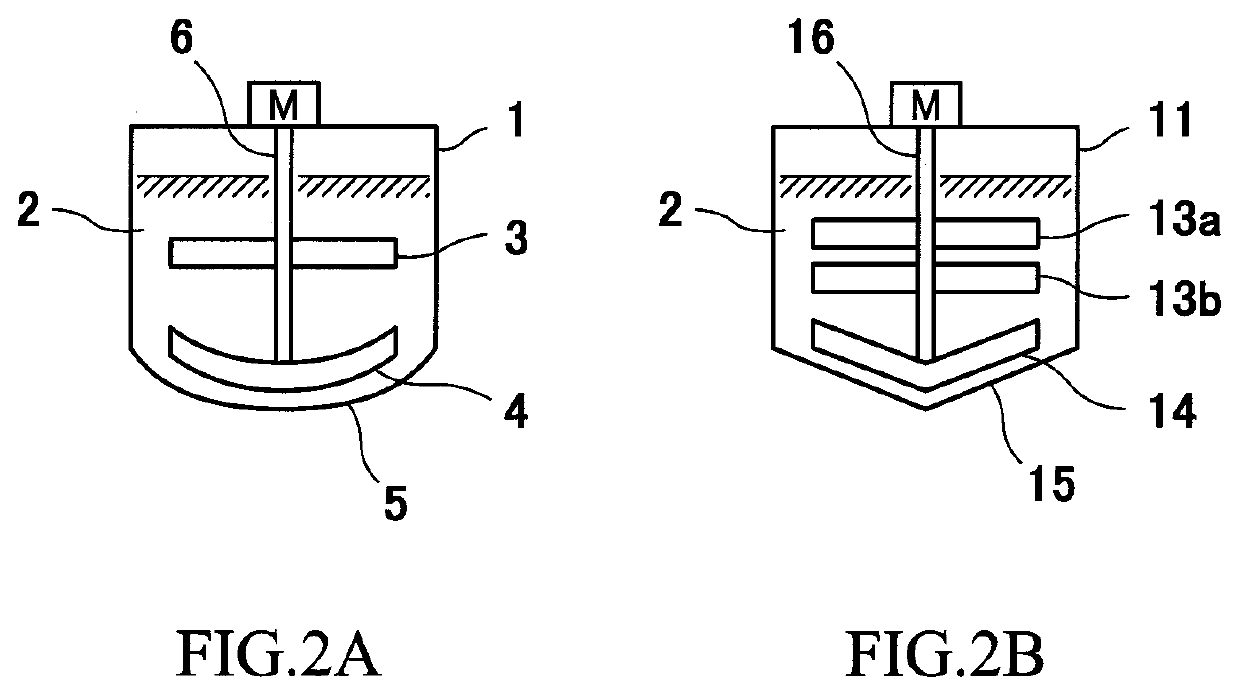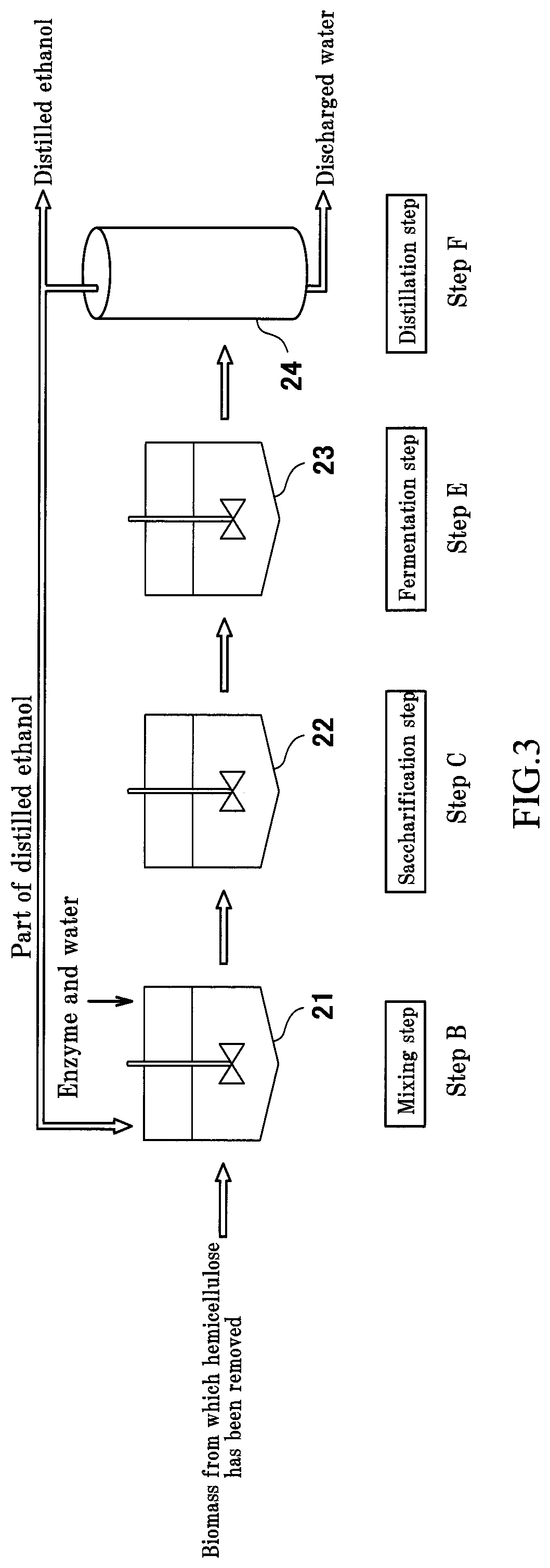Method for producing bioethanol by enzymatic technique using cellulosic biomass as raw material
a cellulosic biomass and enzymatic technology, applied in the field of enzymatic technology for producing bioethanol, can solve the problems of reduced saccharification yield, difficult handling, low specific gravity of biomass, etc., and achieve the effects of reducing distillation load, preventing bacterial proliferation in saccharification step and fermentation step, and reducing production cost of ethanol
- Summary
- Abstract
- Description
- Claims
- Application Information
AI Technical Summary
Benefits of technology
Problems solved by technology
Method used
Image
Examples
embodiment 1
[0076]FIG. 3 illustrates an ethanol production method of Embodiment 1. In the ethanol production method of Embodiment 1, the steps B, C, and E are carried out in a mixing chamber 21, a saccharification chamber 22, and a fermentation chamber 23, respectively. In a steady state, part of distilled ethanol obtained in a distillation device 24 is delivered to the chamber 21 in which the step B is carried out. The distilled ethanol added to the chamber 21 is collected afterwards from the distillation device 24.
embodiment 2
[0077]FIG. 4 illustrates an ethanol production method of Embodiment 2. The ethanol production method of Embodiment 2 is the same as that of Embodiment 1, except that the step C (saccharification step) and the step E (fermentation step) are performed successively in a single chamber (saccharification / fermentation chamber 32).
[0078]In Embodiment 2, ethanol concentration meters 25 and 26 are provided for the mixing chamber 21 and saccharification / fermentation chamber 32, respectively, and each of the meters measures the ethanol concentration of the contents of the chamber. The amount of the distilled ethanol to be added to the mixing chamber 21 can be adjusted based on observation of the values measured by the ethanol concentration meters 25 and 26.
PUM
| Property | Measurement | Unit |
|---|---|---|
| diameter | aaaaa | aaaaa |
| temperature | aaaaa | aaaaa |
| oxidizing power | aaaaa | aaaaa |
Abstract
Description
Claims
Application Information
 Login to View More
Login to View More - R&D
- Intellectual Property
- Life Sciences
- Materials
- Tech Scout
- Unparalleled Data Quality
- Higher Quality Content
- 60% Fewer Hallucinations
Browse by: Latest US Patents, China's latest patents, Technical Efficacy Thesaurus, Application Domain, Technology Topic, Popular Technical Reports.
© 2025 PatSnap. All rights reserved.Legal|Privacy policy|Modern Slavery Act Transparency Statement|Sitemap|About US| Contact US: help@patsnap.com



